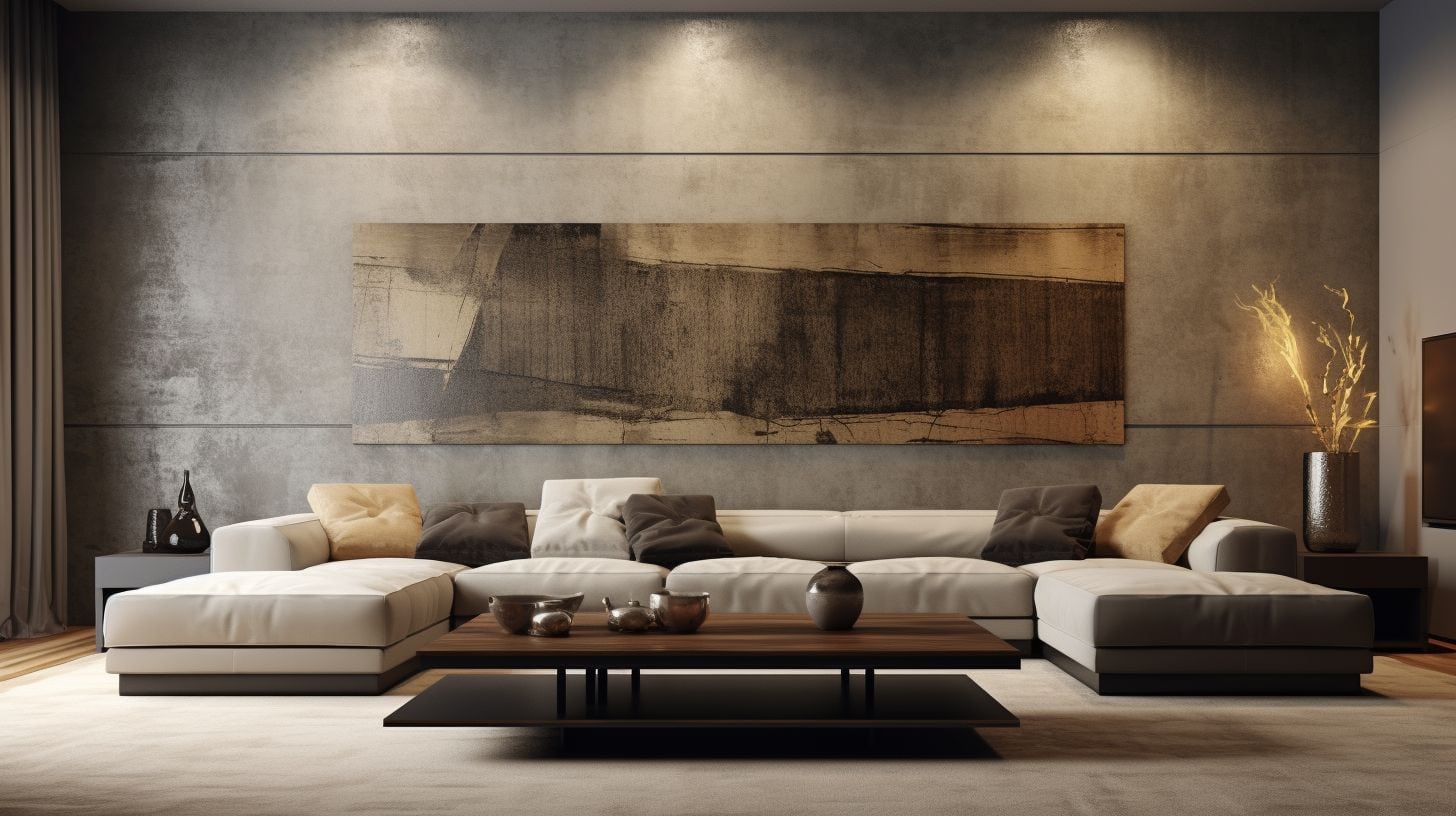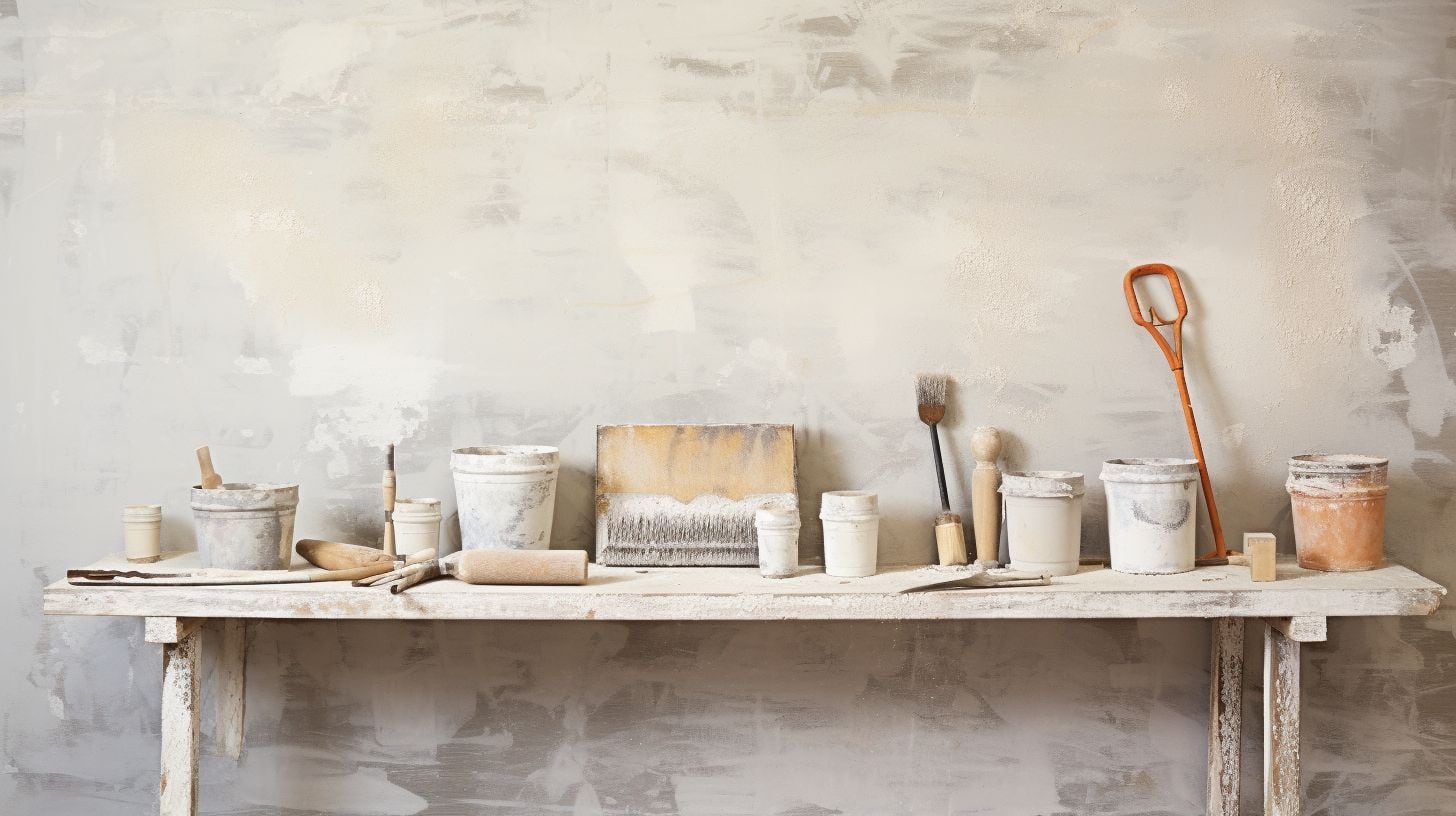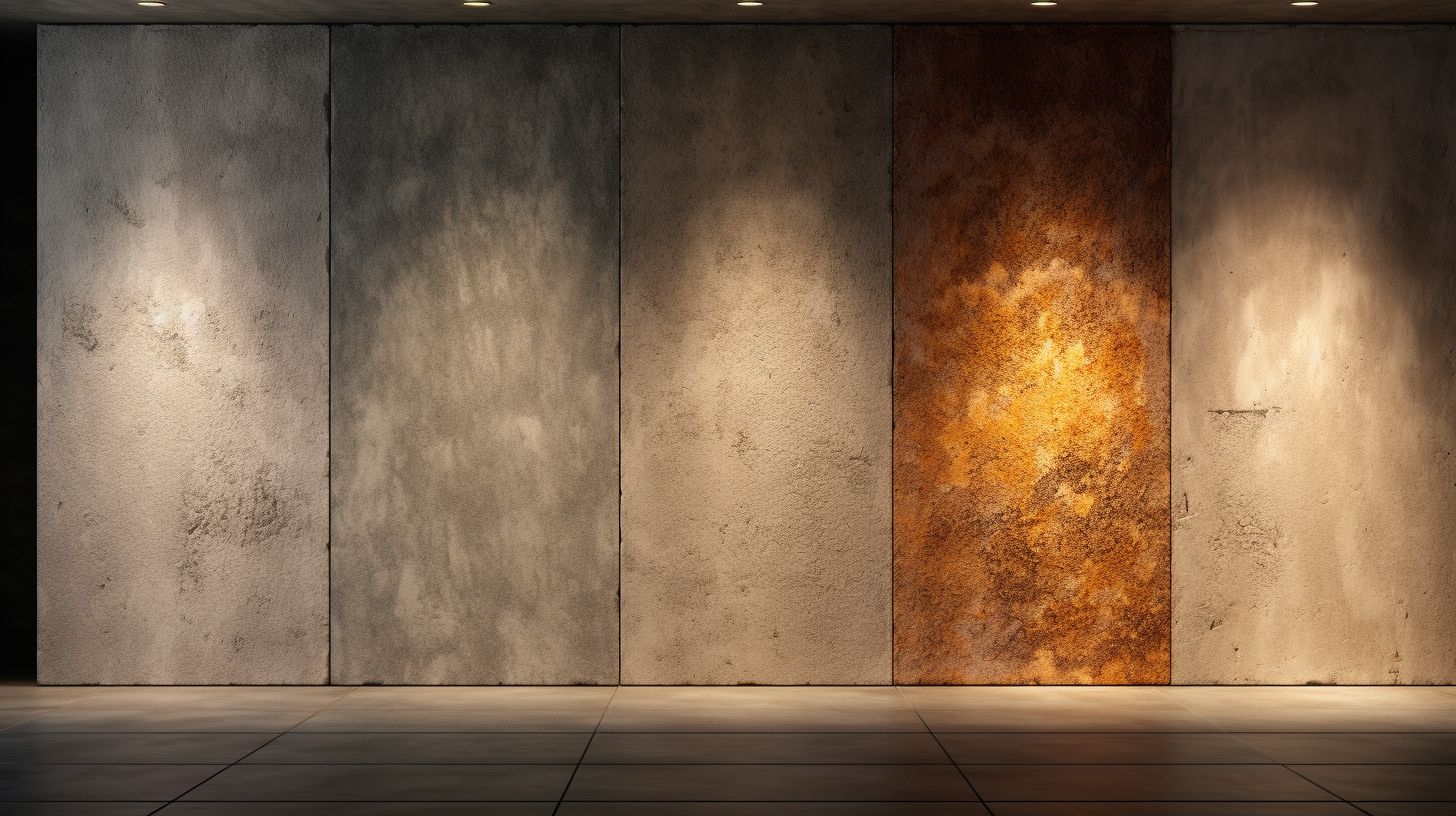Venetian plaster, with its rich history and luxurious finish, has been a favorite choice for adding elegance to interiors. Its versatility extends beyond the smooth, high-gloss surfaces commonly associated with it. Textured Venetian plaster offers a unique way to bring depth and character to walls, providing a tactile and visual experience that transforms spaces.
Exploring Textured Venetian Plaster
Textured Venetian plaster combines traditional craftsmanship with creative techniques to produce a variety of stunning finishes. This approach allows for the creation of custom textures that can range from subtle and understated to bold and dramatic. By manipulating the plaster during the application process, artisans can achieve a wide array of effects, making each project unique.
In this article, we will delve into the methods for creating various textures, the tools and techniques involved, and the popular texture styles that can enhance any interior design.

Creating Various Textures
Techniques for Creating Textures
Layering Methods
Applying Multiple Layers for Depth
Creating textured Venetian plaster often involves applying multiple layers of plaster. Each layer adds depth and dimension, contributing to the overall texture. Start with a base coat to ensure a smooth surface, then apply subsequent layers using different techniques to build up the desired texture. The key is to work in thin layers, allowing each to dry partially before adding the next. This method prevents the plaster from becoming too thick and unmanageable.
Techniques for Varying Texture
To achieve a variety of textures, vary the application techniques and tools used for each layer. Experiment with different angles, pressures, and motions to create unique patterns and effects. Adjusting the thickness and consistency of the plaster can also influence the final texture. For example, a thicker mix can create more pronounced textures, while a thinner mix can produce subtle, delicate patterns.
Manipulating the Plaster
Using Different Tools for Texture Creation
Different tools can be used to manipulate the plaster and create various textures. Common tools include trowels, sponges, brushes, and specialty items like combs and stamps. Each tool can produce a distinct effect, and combining multiple tools can enhance the complexity and richness of the texture.
Adjusting the Plaster Consistency
The consistency of the plaster plays a crucial role in texture creation. A thicker consistency is ideal for creating raised textures and pronounced patterns, while a thinner consistency allows for smoother, more subtle effects. Adjust the mix by adding more water or plaster powder as needed to achieve the desired consistency for each layer.
Tools and Techniques

Tools for Textured Venetian Plaster
Trowels and Blades
Different Types of Trowels
Trowels are essential tools in the application of Venetian plaster. They come in various shapes and sizes, each suitable for different texturing techniques. Stainless steel trowels are preferred for their smooth, non-reactive surfaces, which help achieve a clean finish.
- Flat Trowels: Ideal for applying base coats and creating smooth textures.
- Notched Trowels: Used for creating linear patterns and grooves.
- Rounded Trowels: Helpful for achieving softer, more organic textures.
Techniques for Using Blades
Blades, similar to trowels but smaller and more flexible, are used for detailed texturing. They can create sharp, precise lines or blend textures seamlessly. Techniques include dragging the blade at different angles and pressures to vary the texture.
Sponges and Brushes
Creating Stippled and Brushed Effects
Sponges and brushes offer a more organic approach to texturing. They can create a range of effects, from fine stippling to broad, sweeping patterns.
- Sponges: Natural or synthetic sponges can be dabbed onto wet plaster to create a stippled effect. Different sponge textures will produce varying results.
- Brushes: Brushes of various bristle types and sizes can be used to apply and manipulate plaster. Soft-bristled brushes create gentle, flowing textures, while stiff-bristled brushes produce more pronounced, rugged effects.
Specialty Tools
Combs, Stamps, and Other Texturing Tools
Specialty tools such as combs and stamps are designed to create specific patterns and textures in Venetian plaster.
- Combs: These tools have evenly spaced teeth that can be dragged through the plaster to create linear patterns or wave-like textures.
- Stamps: Stamps with various designs can be pressed into the wet plaster to imprint patterns, adding decorative elements to the finish.
- Other Tools: Items like trowel edges, plastic scrapers, and even custom-made tools can be used to achieve unique textures.
Techniques for Applying Textures
Stippling
Using Sponges and Brushes for Stippled Textures
To create a stippled texture, lightly press a sponge or brush onto the wet plaster, lifting it off to leave a patterned imprint. The density and pattern of the stippling can be controlled by the type of tool used and the pressure applied.
Combing and Dragging
Creating Linear Patterns with Combs and Drag Tools
Drag combs or other tools with teeth across the plaster surface to form straight lines, waves, or other linear patterns. Vary the angle and pressure to achieve different effects. This technique is ideal for creating textured backdrops or accent walls.
Stamping
Using Stamps to Imprint Designs
Press stamps into the wet plaster to create detailed imprints. These can range from simple geometric shapes to intricate designs. Ensure the plaster is still wet enough to accept the stamp but firm enough to hold the imprint without smudging.
Layering and Blending
Techniques for Blending Different Textures
Combine multiple texturing techniques to create a layered, complex finish. For example, apply a stippled base layer and then add linear patterns on top. Blend the edges of different textures to create a seamless transition, enhancing the overall depth and richness of the finish.
Popular Texture Styles

Classic and Modern Texture Styles
Marmorino
Characteristics and Application Methods
Marmorino is a traditional Venetian plaster style known for its smooth, marble-like finish. It often features subtle veins and variations in colour, mimicking natural stone.
- Application: Apply multiple thin layers of plaster, each one smoothed out meticulously. After the final layer, burnish the surface to achieve the desired sheen. Marmorino can be polished to a high gloss or left with a more matte finish, depending on the desired effect.
Stucco Veneziano
Creating a Rustic, Old-World Finish
Stucco Veneziano is characterised by its rustic, textured appearance, reminiscent of ancient Venetian buildings. This style adds a sense of history and old-world charm to any space.
- Application: Apply a base coat, then use trowels and other tools to create a rough, textured surface. The texture is often built up with multiple layers, each one adding depth and character. Finish with a light burnishing to highlight the texture.
Scagliola
Imitating Inlaid Stone or Marble
Scagliola is a decorative plaster technique used to imitate the appearance of inlaid stone or marble. It is known for its intricate patterns and vibrant colours.
- Application: Mix plaster with pigments to create colourful layers. Apply the plaster in a way that mimics the natural veins and patterns of stone. Use fine tools to create detailed designs, then polish the surface to enhance the marble-like appearance.
Contemporary Textures
Modern Styles and Techniques
Modern textured Venetian plaster styles often incorporate bold patterns and innovative techniques. These styles can range from geometric designs to abstract textures, offering a contemporary twist on traditional plaster.
- Application: Experiment with a variety of tools and techniques to create unique textures. Modern styles may use unconventional tools like spatulas, scrapers, or even everyday items to achieve distinctive patterns. Layer different textures and colours to add depth and interest.
Achieving Desired Effects
Customising Textures for Different Aesthetics
Customise the texture of Venetian plaster to match the aesthetic of the space. For a classic look, opt for smooth, polished finishes like Marmorino or Stucco Veneziano. For a more modern or eclectic style, experiment with bold, textured patterns and vibrant colours.
Combining Multiple Techniques for Unique Finishes
Combining different texturing techniques can result in truly unique finishes. For example, layer a stippled texture with linear patterns or blend rustic textures with smooth areas to create a dynamic, multi-dimensional effect. This approach allows for endless creative possibilities, ensuring each project is one-of-a-kind.
Common Applications and Uses
Residential Applications
Living Rooms and Feature Walls
Textured Venetian plaster adds depth and character to living rooms, transforming ordinary walls into striking focal points. Feature walls, in particular, benefit from textured finishes, drawing attention and creating a sense of drama. Whether using a subtle stippled texture or a bold geometric pattern, textured Venetian plaster can enhance the overall aesthetic of the living space.
Kitchens and Bathrooms
In kitchens and bathrooms, textured Venetian plaster offers both beauty and functionality. Its moisture-resistant properties make it suitable for these high-humidity areas. Textured finishes can add a unique touch to backsplashes, accent walls, or even ceilings, providing a sophisticated and durable surface that is easy to maintain.
Commercial Applications
Hotels and Restaurants
Textured Venetian plaster is a popular choice in the hospitality industry, where it helps create luxurious and inviting atmospheres. In hotels, it can be used in lobbies, guest rooms, and hallways to add a sense of elegance and refinement. In restaurants, textured plaster can enhance dining areas, bars, and private rooms, contributing to a memorable dining experience.
Office Spaces and Showrooms
In office environments, textured Venetian plaster adds a professional yet stylish touch. It can be used to create accent walls in reception areas, conference rooms, or executive offices, providing a sophisticated backdrop that enhances the overall decor. Showrooms benefit from textured plaster by creating an upscale, visually appealing environment that highlights products and displays.
Artistic and Decorative Uses
Accent Walls
Textured Venetian plaster is perfect for creating accent walls that serve as focal points in any room. The variety of textures and patterns available allows for endless creative possibilities, making each accent wall unique. Whether in a residential or commercial setting, an accent wall with textured Venetian plaster adds visual interest and a touch of luxury.
Artistic Installations
Beyond traditional wall applications, textured Venetian plaster can be used for artistic installations and decorative elements. Its versatility allows for the creation of intricate designs, patterns, and even three-dimensional effects. These installations can serve as eye-catching art pieces, transforming ordinary spaces into extraordinary works of art.
Maintenance and Care
Cleaning Textured Venetian Plaster
Dusting and Gentle Cleaning Methods
Regular maintenance of textured Venetian plaster involves dusting and gentle cleaning to preserve its appearance. Use a soft, dry cloth or a feather duster to remove dust and debris from the textured surface. For more thorough cleaning, a damp cloth with mild soap can be used. Avoid using abrasive cleaners or scrubbing tools, as these can damage the texture and finish of the plaster.
Avoiding Abrasive Cleaners
Textured Venetian plaster surfaces are delicate and can be easily scratched or damaged by harsh cleaning agents. Stick to pH-neutral, non-abrasive cleaners that are specifically designed for delicate surfaces. Test any cleaning product on a small, inconspicuous area before applying it to the entire surface to ensure it does not harm the plaster.
Repair and Upkeep
Fixing Minor Imperfections
Over time, textured Venetian plaster may develop minor imperfections such as small chips or scratches. These can be repaired relatively easily to restore the original look.
- Small Chips and Cracks: Fill any small chips or cracks with a matching plaster mixture. Once dry, blend the repaired area with the surrounding texture using the original texturing tools.
- Scratches: Lightly sand the scratched area with fine grit sandpaper and reapply a thin layer of plaster if necessary. Re-texture the area to match the existing pattern, then allow it to dry completely.
Reapplying Textures and Finishes
In cases where the texture has worn down or the finish has dulled, reapplying textures and finishes can rejuvenate the surface.
- Reapplying Texture: Clean the surface thoroughly and apply a new layer of plaster using the original texturing technique. Ensure the new texture blends seamlessly with the existing one.
- Reapplying Finish: If the finish has dulled, consider reapplying a protective wax or polish to restore the surface’s sheen and protect it from further wear.
Protecting the Surface
Preventing Physical Damage
To maintain the integrity of textured Venetian plaster, take measures to prevent physical damage. Avoid placing heavy objects or furniture directly against textured walls, as this can cause dents or scratches. Use protective padding or barriers if necessary to safeguard the plaster.
Environmental Considerations
Textured Venetian plaster can be sensitive to environmental conditions such as high humidity or extreme temperature changes. Ensure that the space is well-ventilated to prevent moisture build-up, which can lead to mould or mildew growth. In areas with fluctuating temperatures, take precautions to minimise the impact on the plaster by maintaining a stable indoor climate.
Conclusion
The Versatility and Visual Impact of Textured Venetian Plaster
Textured Venetian plaster offers a unique and versatile solution for enhancing the aesthetic appeal of both residential and commercial interiors. By exploring various techniques, tools, and styles, artisans can create stunning finishes that add depth, character, and a touch of luxury to any space.
Mastering Texturing Techniques
Creating textured Venetian plaster involves a combination of skill, creativity, and the right tools. From layering methods to the use of sponges, brushes, and specialty tools, each technique contributes to the overall texture and finish. Mastering these techniques allows for the creation of custom textures that can range from subtle and understated to bold and dramatic.
Wide Range of Applications
The adaptability of textured Venetian plaster makes it suitable for a variety of applications. In residential settings, it can transform living rooms, kitchens, and bathrooms with its unique visual and tactile qualities. In commercial spaces, it adds a touch of elegance and sophistication to hotels, restaurants, offices, and showrooms. Additionally, textured Venetian plaster can be used for artistic installations and accent walls, creating focal points that captivate and inspire.
Maintaining the Beauty of Textured Finishes
Proper maintenance and care are essential for preserving the beauty and integrity of textured Venetian plaster. Regular dusting and gentle cleaning, along with periodic repairs and reapplication of textures and finishes, ensure that the plaster remains in pristine condition. Protecting the surface from physical damage and environmental factors further enhances its longevity.
Timeless Appeal and Lasting Elegance
Textured Venetian plaster not only enhances the aesthetic of spaces but also reflects a commitment to quality and craftsmanship. Its enduring appeal and versatile application make it a preferred choice for those seeking to create visually stunning and unique interiors. By embracing the art of texturing, homeowners and designers can enjoy the timeless beauty and elegance that textured Venetian plaster brings to any environment.
Explore Textured Venetian Plaster with Venetian Plasterer
At Venetian Plasterer, we excel in applying textured Venetian plaster to add depth and character to your Sydney interiors. Our skilled artisans use specialised tools and techniques to create a variety of textures, from subtle patterns to bold, dramatic effects. We stay updated with popular texture styles to provide you with the latest trends and timeless classics. By choosing our high-quality textured Venetian plaster in Sydney, you can transform any surface into a unique, visually captivating focal point that enhances the aesthetic appeal of your space.
Related

